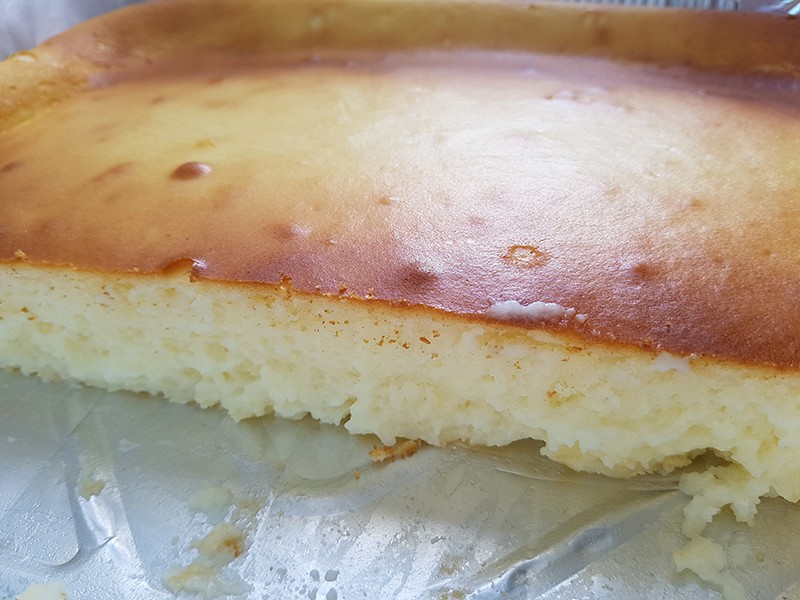Donate What is a hurricane? Seasons of hurricanes bring a humbling reminder that most of nature remains unpredictable despite the rich advancement of technology. This occurs when strong winds push the sea closer to the coast, rising water levels and triggering massive crashing waves. They also forecast how powerful it will become. "Kermit," taking off from Tampa, Florida, on Jan. 18, 2017. New York, NY: Grosset & Dunlap, 2010. A tropical storm is classified as a hurricane when sustained winds reach 74 miles per hour, though hurricane winds are often faster. Hurricanes are also known as cyclones or typhoons, depending on which region they occur in. The Atlantic Coast, the Gulf of Mexico, and the Hawaiian islands are most vulnerable to hurricanes. No hurricane is on record as ever hitting the U.S. Pacific Coast. Flooding can occur as a result of heavy rain and storm surges from a hurricane. Hurricanes are large, swirling storms. Some mandatory evacuations were ordered Monday in the Tampa Bay . All flights have been cancelled flights to Jamaica and Haiti already. We recognise that not all activities and ideas are appropriate and suitable for all children and families or in all circumstances. The month of July is the one month where hurricanes are least likely to form in the south-western region due to the dominating easterly winds that make the climate drier. The Caribbean region is located southeast of the Gulf of Mexico and the North American mainland and measures around 1,000 miles from north to south and over 2,500 miles from east to west. If youd like to help you can call 305-912-1757. Founding father Alexander Hamilton was born and spent part of his childhood in Charlestown, the capital of the island of Nevis in the Leeward Islands. They operate through absorbing energy from warm water and can even split off tornadoes as they go. Hurricanes can last for weeks, but most hurricanes typically last approximately 10 days. In Haiti, flooding was already reported in Les Cayes, a coastal city of 70,000 people. Over warm ocean waters, hurricanes form. Woods. Hurricanes are large, swirling storms producing winds of 119 kilometers per hour (74 mph) or higher. September 20, 2022 - Tropical Storm Gaston forms over the central Atlantic.September 26, 2022 - Weakens to a post-tropical cyclone. 463 Words2 Pages. The eyewall, the most hazardous region of the cyclone with the fiercest winds, thickest clouds, and heaviest rain, surrounds the eye. They are among the most powerful naturally caused storms. But it can also reinforce itself if the conditions are right, which could increase the hurricanes lifespan. Hurricane season 2017 was extremely active; Hurricane Irma (category 5) was one of the most powerful storms in history. Im currently on a mission to show you the amazing places and diversity that our planet has to offer! There are five different categories according to the Saffir-Simpson Hurricane Wind Scale, which determines the strength of the storm. Here are 25 Interesting Facts About Typhoon, Hurricanes and Cyclones. Past coverage of the 2020 and 2019 hurricane season and the latest weather news can also be found on CNN. The right side of a hurricane in the Northern Hemisphere is often stronger in terms of winds. According to the National Geographic Society, "Hurricanes are giant, spiraling tropical storms that can pack wind speeds of over 160 miles (257 kilometers) an hour and unleash more than 2.4 trillion gallons (9 trillion liters) of rain a day. 3. They are passionate about turning your everyday moments into memories and bringing you inspiring ideas to have fun with your family. Typhoon is the name for tropical storms in the Northwest Pacific, and cyclones occur in the South Pacific and the Indian Ocean. In the South Pacific and the Indian Ocean, tropical storms are referred to as cyclones. June 5, 2022 - Tropical Storm Alex forms about 690 miles west-southwest of Bermuda.June 6, 2022 - Weakens to a post-tropical cyclone. 50 Interesting Facts on Hurricanes. The Caribbean is known for being prone to hurricanes due to its warm waters and moist air during the summer months. 10Tropical Cyclone Naming History and Retired Names. National Hurricane Center. The boy died after storms from Matthew passed over the island. Accessed: October 9, 2011. Typhoons are hurricanes that form in the Northwest Pacific (near Japan), and Cyclones are those occurring in the South Pacific or Indian oceans. Typhoon Tip (1979), which did not strike land, is considered to be the largest, with tropical storm-force winds 1,350 miles in diameter. This is definitely one of the many interesting facts about hurricanes! These categories are ranked after the wind speed which can range from 74 miles per hour up to category 5 with winds up to 157 miles per hour or more. T: +5999 - 788 1949 or Out of all the regions, the south-eastern part has the least amount and the north-east region of the Bahamas has the most. There are five categories of hurricanes (1-5) and their based-on wind speed. Men's names are awarded to odd-numbered storms during even-numbered years, and women's names are given to odd-numbered storms during odd-numbered years. September 20, 2022 - Strengthens to a Category 3 hurricane.September 24, 2022 - Fiona morphs into a post-tropical cyclone and makes landfall in Canadas Nova Scotia. It was the first Category 5 hurricane to hit Cuba since 1937, when Ernest Hemingway was an occasional resident of the island. Hurricanes being the largest storms on Earth, they vary in sizes from 62 to 1243 mi (100- 2000). On rare occasions, hurricanes can occur as early as May. At least 130 people are killed in storm-related incidents in Florida. 2. (Cojmar, a little port just east of Havana, where his fabled fishing. May 5, 2007. Storms in the Caribbean Islands were given names based on the Roman Catholic liturgical calendar saint of the day on the day the hurricane struck, such as Hurricane San Felipe. The northern half is officially the French-run Collectivit de Saint-Martin. 04 Hurricane starts when warm seas rise into a . Hurricanes can be truly massive. Once winds reach the 74 mph threshold, the National Hurricane Center will declare the system a hurricane. On average, the Atlantic basin only produces seven of these powerful storms each year. Some scientists think the rise in hurricanes is due to a natural cycle: hurricanes are rare for the first 30 to 60 years of the cycle and then they become more common for the next 30 to 60. Once a hurricane forms, weather forecasters predict its path. Hurricanes have what we call the eye diameter, which is typically 2040 miles (3065 km) in mostly calm weather. CNN. Puerto Rico is not a state, but a commonwealth within the United States. A hurricane can reach 40,000 to 50,000 feet up into the sky. Powerful hurricanes rotate so vigorously and are capable enough to uproot whole trees and cause destruction in structures! 3. The majority of storm winds are horizontal in nature. A tropical storm is considered a hurricane when its winds reach or exceed 74 mph (119 km/h). Most of the country live in small towns and villages and socialize a lot. On Oct. 22, 2012, over tropical ocean waters off the coast of Nicaragua, Hurricane Sandy began from a tropical wave that developed into a tropical depression, then quickly into a tropical cyclone. November 28, 2006. More than 90% of the population of Belize can read and most can speak in three languages: English, Spanish, and Creole. The usage of names for big storms makes communication and understanding about specific hurricanes much easier for weather forecasters, researchers, emergency responders, naval officers, and the public. 5Hojem, Benjamin. Each Hurricane can shower down more than 2.4 trillion gallons of rain each day. It is a common misconception that opening all the windows in a house during a hurricane will equalize the pressure in the house so the windows wont explode. Accessed: September 13, 2018. During the Galveston hurricane of 1900, nuns used ropes to tie themselves to rows of children in orphanages, but the floodwater was too hard and fast. September 30, 2022 - Hurricane Ian makes landfall near Georgetown, South Carolina, as a Category 1 storm, before being downgraded to a post-tropical cyclone. Citation: What we know about Hurricane Irma: facts, figures, forecast (2017 . rights reserved. Hurricanes Occur in two regions of the pacific. Accessed: September 12, 2018. 10 Interesting Facts About Hurricanes . Hurricanes form over warm ocean waters near the equator. [emailprotected], Location, Transportation & How to get here, 10 reasons to book your vacation to Curacao, 5 important facts about hurricanes (in the Caribbean), 6 ways the Avila Beach Hotel contributes to sustainability. Hurricane winds can reach speeds of up to 320 km/h (200 mph) This is strong enough to rip up grown trees from the ground and destroy buildings. A hurricane warning is issued when a hurricane is expected to arrive within 24 hours. The FOX Weather Update podcast also provides weather information for the entire country. Tropical cyclones that occur in the Atlantic, Hurricane names are chosen from a list selected by the World Meteorological Organization. The topics of the essay are the impact that this natural disaster have on the area, educate the community, safety and awareness, and fun facts. This article contains incorrect information, This article doesnt have the information Im looking for. Hurricanes result in storm surge flooding, strong winds, and heavy rainfall that can cause inland flooding, rip currents, and tornadoes. All Hurricane season peaks in September when the heaviest ones strike. Hurricane Andrew (1992) had 62 tornadoes, and Hurricane Beulah (1967) created 141 tornadoes. A hurricane makes landfall when its center, not its edge, crosses the coastline. The 1-5 scale estimates potential property damage. Each storm lasts about a week and travels at 10-20 mph (16-32 kph) over open water. In contrast, Hurricane Gilberts (1988) stretched over 500 miles. Here are thoughts and factoids from Lambrigtsen in the field of hurricane research. THE SAFFIR-SIMPSON HURRICANE WIND SCALE EXPLAINED. It's not unusual for individuals in the path of a hurricane to believe the storm has passed them by and that it's safe to get outside. Thirty-six of the 64 major hurricanes (Categories 3-5) that hit the U.S. in the 20th century struck in September. Below are few interesting, shocking and unusual facts about hurricanes: The hurricane winds can have speeds of up to 160mph. You can still visit world-class scuba diving destinations, enjoy popular music and culture, or sit on the unsullied beaches outside the Caribbean hurricane belt. 1-5 Interesting Facts About Hurricanes 1. 19. 2023 Fact Retriever LLC. Discovery Company. Mankato, MN: Capstone Books, 2001. Hurricane John lived for a total of 30 calendar days. They occasionally make contact with the ground. Each year only around 14 of these low-pressure systems go on to gain sustained winds above 39 mph and earn a name. Hurricanes in the Southern Hemisphere spin in a clockwise direction. Some Islands affected are the Northern Windward Islands such as St. Lucia and St. Vincent, the Leeward Islands such as the Virgin Islands, St. Martin, and Guadeloupe Islands, and the Greater Antilles such as Cuba, Jamaica, the Cayman Islands, and the Dominican Republic. A normal hurricane may drop 6-8 in (15-20 cm) of rain over a large area. Your privacy is important to us. Be sure to download the FOX Weather app to track any storms in your area and receive potentially life-saving weather alerts issued by the National Weather Service. Experts say "hurucane" represented the evil spirit of the wind to the Tano.
What Isolates A Combiner From Any Downstream Components?,
Fleet Farm Antibiotics,
Danielle Outlaw Partner,
Dementia Poems For Funerals,
Articles I



